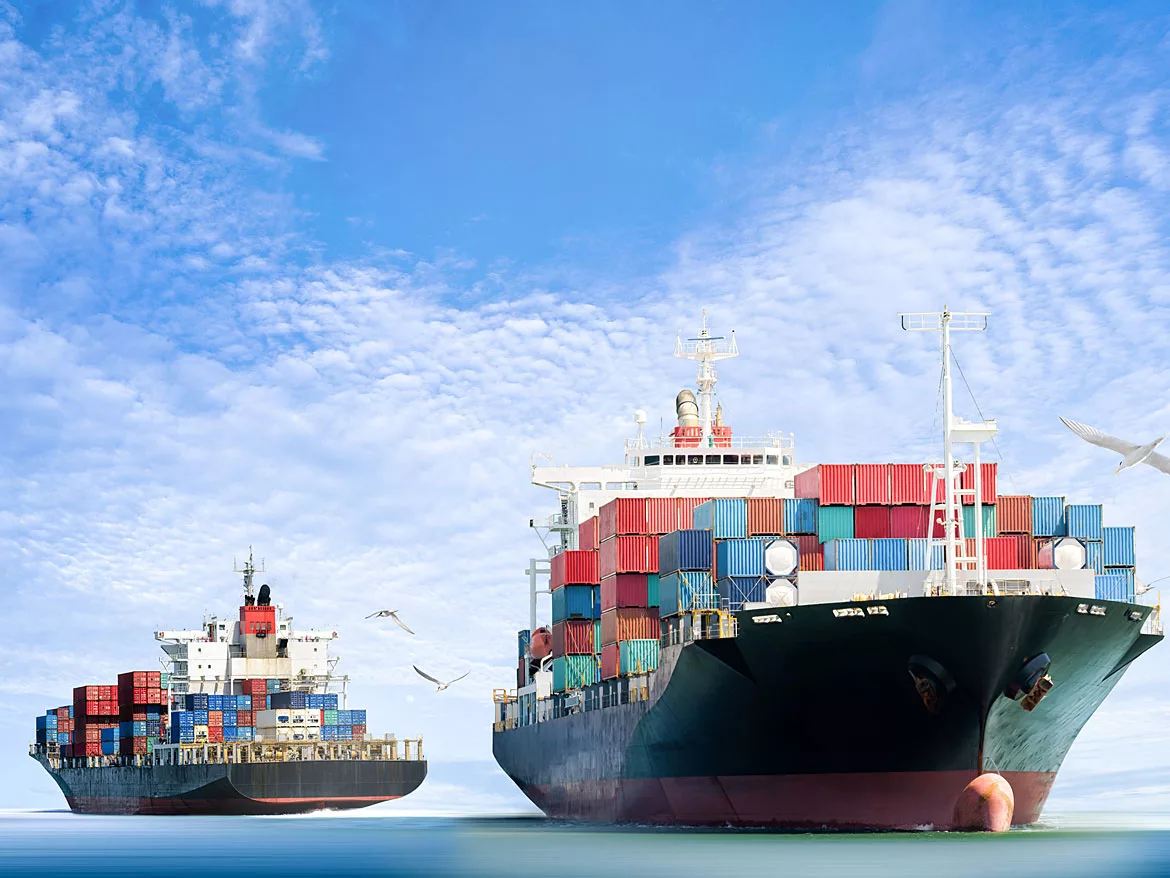When a Little Innovation Makes a Big Impact

In recent years, a relatively new innovation added to the marine coatings technology toolbox has been shaking things up and gaining some serious traction in the maritime industry.
Selektope®, an active agent added during the paint formulation process, was approved by the EU Standing Committee on Biocidal Products for EU-wide use from the 1st of January 2016. Since then, it has made great waves in the marine antifouling coatings market, with multiple products developed and brought to market by major players in the marine antifouling coatings industry.
Today, over 800 ships are sailing under the protection of this nano-molar sized innovation that repels approaching barnacle species from the hull with a very unique mode of action. When barnacle larvae come into contact with Selektope, natural receptor simulation puts them into swimming mode. The effect is reversible, and the larvae quickly return to their normal state when not exposed to Selektope leaching from the coating surface.
This is a technology characterized by its selective action and high efficacy at extremely low concentrations. In fact, to obtain full protection against barnacle fouling, just 0.1 - 0.3% w/w of Selektope should be used in a wet paint formulation. This means that only a few grams of Selektope are needed per liter of paint.
An Age-Old Problem, Accelerated In the 21st Century
Accumulating biological matter on the hull is not a new problem for merchant ships. However, it is a problem that is set to get far worse, particularly for any vessels idling in warmer waters. With ocean temperatures rising on a global scale, biofouling hotspots are increasing in size and severity, leaving more ships at risk of the negative impacts of biofouling has on ship efficiency. Since fouling species flourish in warmer waters, the risk of them making a home on ship hulls is significantly increasing year-on-year.
Biofouling plays a huge role in decreasing ship efficiency and lessening the impact of other fuel-saving measures deployed on ships. Hard fouling, caused by species that have a hard shell such as barnacles, mollusks and bivalves, is particularly detrimental. Since barnacle fouling is the most encountered of all hard fouling species on ship hulls, its prohibition represents a huge challenge.
Barnacles can only attach to a hull when a ship sits at anchor for a few days or more in coastal waters. However, in recent years an increasing number of ships have been idling in warmer coastal waters due to the far-reaching impact of the COVID-19 pandemic and geopolitical events on global trade putting them at a higher risk of barnacle fouling.
Quantifying the True Risk
An extensive, independent study undertaken by I-Tech and Marine Benchmark of global fleet data, up to and including the year 2020, explored the issue of idling and resultant biofouling. The results gave novel insight into the differences between sectors of the industry, confirming a large increase in vessel idling over the past decade. The top findings of the study were that the total number of vessels idling has roughly doubled over the last decade, and that a high percentage of idling is occurring in water temperatures above 15 °C. Vessels in these waters are at a much more elevated risk of barnacle fouling compared to colder waters. The study also found that vessels in the global shipping fleet are also increasingly idling in waters of temperatures above 25 °C, at extremely high risk of barnacle fouling.
Therefore, the entry of Selektope onto the marine coatings market could not have come at a better time. This is reflected in high levels of uptake of the technology in a short space of time.
Proving the Technology Works
Although uptake of the technology has been rapid, results that confirm its effectiveness, even under serious fouling pressures, are starting to come in for ships that have been sailing for five years or more. This is an important yard stick for test results since it is the period in which ships operate before having to legally dry dock for repairs.
Earlier this year, I-Tech welcomed long-awaited results from a large, 8,900 TEU container vessel that had sailed for five years in warm waters with SEAFLO NEO CF PREMIUM, a copper-free antifouling system on the hull that contains Selektope. The ship was completely free of barnacle growth with no hull cleaning undertaken when it arrived at dry dock.
Performance metrics also confirmed that the container ship had an average operation level of 78%. When the performance degradation of the vessel was evaluated in line with the in-service performance indicator Standard ISO 19030, it was found that the ship had suffered zero speed loss over 60 months. If barnacle fouling had been present on the hull, this would have been a very different story. Barnacle fouling on the hull creates additional hydrodynamic drag when the vessel sails through water. This results in the ship having to burn more fuel to maintain a set speed or burn the same amount of fuel but suffer speed losses. For this container ship, neither of these scenarios was required thanks to the protection afforded by the Selektope present within the antifouling coating.
Compared to the market average for antifouling products, over a 60-month period the ship achieved 16.5% fuel savings and its CO2 emissions were reduced by 85,500 tons.
Catastrophic Carbon Emissions
In 2019, I-Tech contracted independent marine coating consultants, Safinah Group to analyze underwater hull fouling condition on a sample of 249 ships that dry docked over a four-year period between 2015-2019. The sample included all major ship types covering a range of trading activity.
It was found that nearly every vessel surveyed had some degree of underwater hull hard fouling. On 44% of vessels surveyed, over 10% of the underwater hull surface was covered with hard fouling. Anything more than 10% coverage is deemed to cause an ‘unacceptable’ impact on vessel performance.
On many of the vessels surveyed, fouling levels were even worse; approximately 15% of vessels had between 10-20% of hard fouling coverage on the hull, 10% of vessels had 20-30% of hard fouling coverage, and the remaining 10% of vessels had between 40-80% of hard fouling coverage.
Extrapolating from published data taken from a 2011 study by Michael P. Schultz, this level of hard fouling could be responsible for at least 110 million tonnes of excess carbon emissions, and an additional US $6 billion spent on fuel per year for the global commercial fleet. The true figure is likely to be higher, as this is a conservative calculation based on relatively low fuel prices in 2019 and only assumes a 10% coverage of hard fouling.
With both our 2019 study, which quantified the true scale of barnacle fouling on the global fleet, and our 2020 Idling Study, we are confident the extent of barnacle fouling coverage across the global fleet will have now increased significantly. This is particularly true for the huge proportion of vessels that had extended idling periods in the past couple of years.
Looking To the Future
When considering future trading potential, ship operators must ensure their ship is protected, whether it is in constant active service, idle for long periods of time, or at risk of fluctuating between the two. For this purpose, Selektope acts like an insurance policy when contained within marine coatings that enables this flexibility, due to its ability to prohibit barnacle fouling even during extended static periods in warm waters. A much-needed technology that doesn’t take up much space in the paint can.
Looking for a reprint of this article?
From high-res PDFs to custom plaques, order your copy today!





